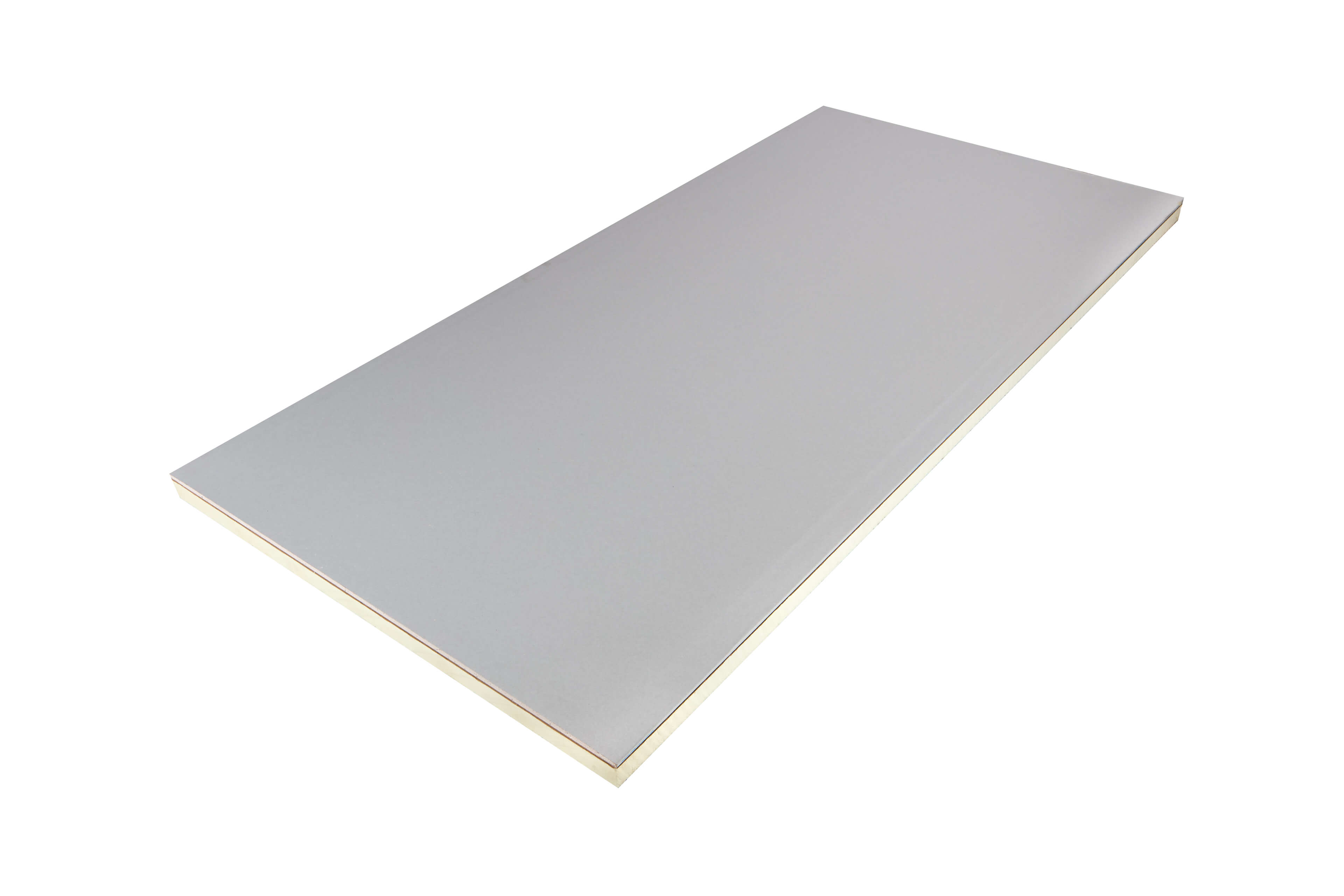PIR Insulated Plasterboard
(9 Products)Achieve a seamless finish whilst reaping a bundle of thermal benefits with PIR Insulated plasterboard: a popular 2-in-1 insulation and drylining product that can be used in a variety of building applications. PIR insulated plasterboard promises thermal efficiency and ultimate convenience by combining a PIR polyisocyanurate foam insulation board with a 12.5mm standard tapered edge plasterboard sheet.
What is PIR Insulated Plasterboard?
PIR insulated plasterboard is exactly as it sounds. It is a board of standard drywall plasterboard pre-bonded to a sheet of insulating material. It is often referred to as foam-backed plasterboard or thermal plasterboard (which refers to the thermal properties that the insulation element adds).
To make PIR insulated plasterboard, manufacturers simply bond a sheet of plasterboard to one side of PIR insulation. The result is an all-in-one board of insulation and plasterboard that reduces heat loss and also drylines the wall or ceiling - chef's kiss.
Where To Install PIR Insulated Plasterboard
Due to its high thermal performance, PIR insulated gypsum board is suitable for use where an enhanced level of thermal insulation is required; between and under rafters and joists, in solid masonry walls, in internal walls and in timber frame builds.
PIR insulated plasterboard is also suited to:
- Walls- solid, cavity or timber frame walls
- Room-in-the-roof applications
- Pitched roofs/Cold flat roofs
- Both new build and renovations
What Are The Benefits of Using PIR Plasterboard?
- Zero Ozone Depletion Potential (ODP) and low Global Warming Potential (GWP)
- Thermal conductivity: 0.022 W/mK
- Suitable for both direct bonding (‘dot and dab’) and mechanically fixed installation techniques
- Features an integral vapour control layer
- Combines insulation & drylining
- BBA certified
PIR Insulated Plasterboard Thicknesses
We refer to all insulated plasterboards by their overall thickness, as this helps you to calculate how much space the board will take up.
For instance, Celotex has an insulated plasterboard product called "Celotex PL4025”, where the “25” refers to the fact that the thickness of the insulation board is 25mm. However, this is bonded to a 12.5mm plasterboard, making the overall thickness 37.5mm. We, therefore, call this product “37.5mm Celotex PL4025”.
All of the thicknesses listed on our site refer to the thickness of the insulation plus the plasterboard.
We stock a wide range of insulated plasterboard products from EPS insulated plasterboard (although we recommend extruded polystyrene for thermal insulation) to more specialist products such as fire protection plasterboard, moisture resistant plasterboard and acoustic plasterboard.
Frequently Asked PIR Insulated Plasterboard Questions
Frequently Asked PIR Insulated Plasterboard Questions
How Should I Install PIR Insulated Plasterboards?
PIR insulated plasterboards are designed to make installation a snappy process. The tapered edge plasterboard allows them to fit seamlessly to lots of different joists, frames, and rafters.
You can fit PIR insulated plasterboards with industry-wide, standard practices. One of the most popular methods of installing is to direct bond dot and dab insulated plasterboard (also known as drylining). You can install the plasterboard directly on top of a concrete or blockwork wall application. This process gains its name from the way that the plasterboard adhesive is pasted to the wall in even dots and dabs.
Some people use mechanically fixed installation techniques to secure insulated plasterboards to walls. More often than not, a galvanised mechanical anchor with a concave head can achieve your desired result. There are lots of different types of mechanical fixings that you can choose from.
How Should I Cut Insulated Plasterboard?
You will need a saw to cut through PIR plasterboard as it's a little tougher than normal plasterboard, due to its thickness. You can use an ordinary saw, but we recommend using a saw with fine teeth for a clean, precise cut.
Always take the proper safety precautions when cutting insulation. We recommend cutting insulation in a clear, open space. You should always wear safety goggles and thick gloves.











